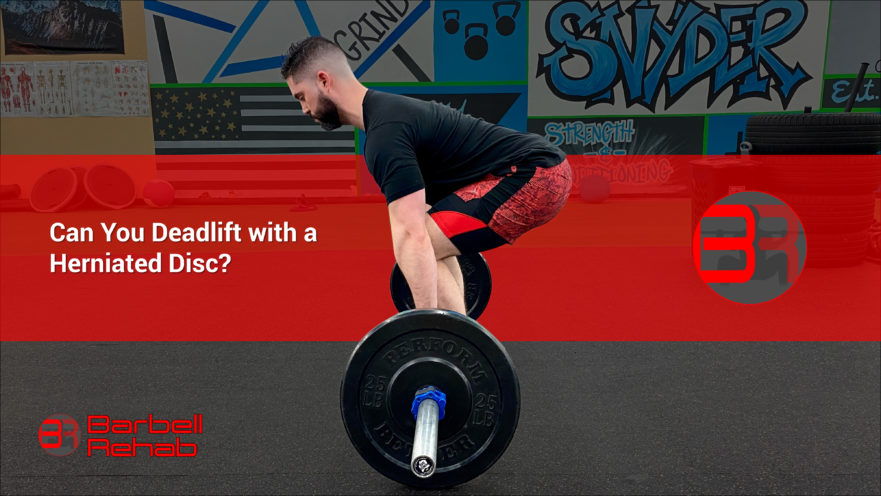As a physical therapist who specializes in treating barbell athletes, one question I get often is “Can I deadlift with a herniated disc?”
While I’d love to give a clear-cut answer, as always, it’s going to depend on a number of factors. So if you’re wondering if you can deadlift with a herniated disc, listen up…I’m going to tell you!
What Is a Herniated Disc?
Your vertebrae, or spinal bones, are cushioned by discs that basically act as shock absorbers for the spine. Each of these discs are made of an inner gel-like substance called the nucleus pulposus, and an outer collagen-rich layer called the annulus fibrosis.
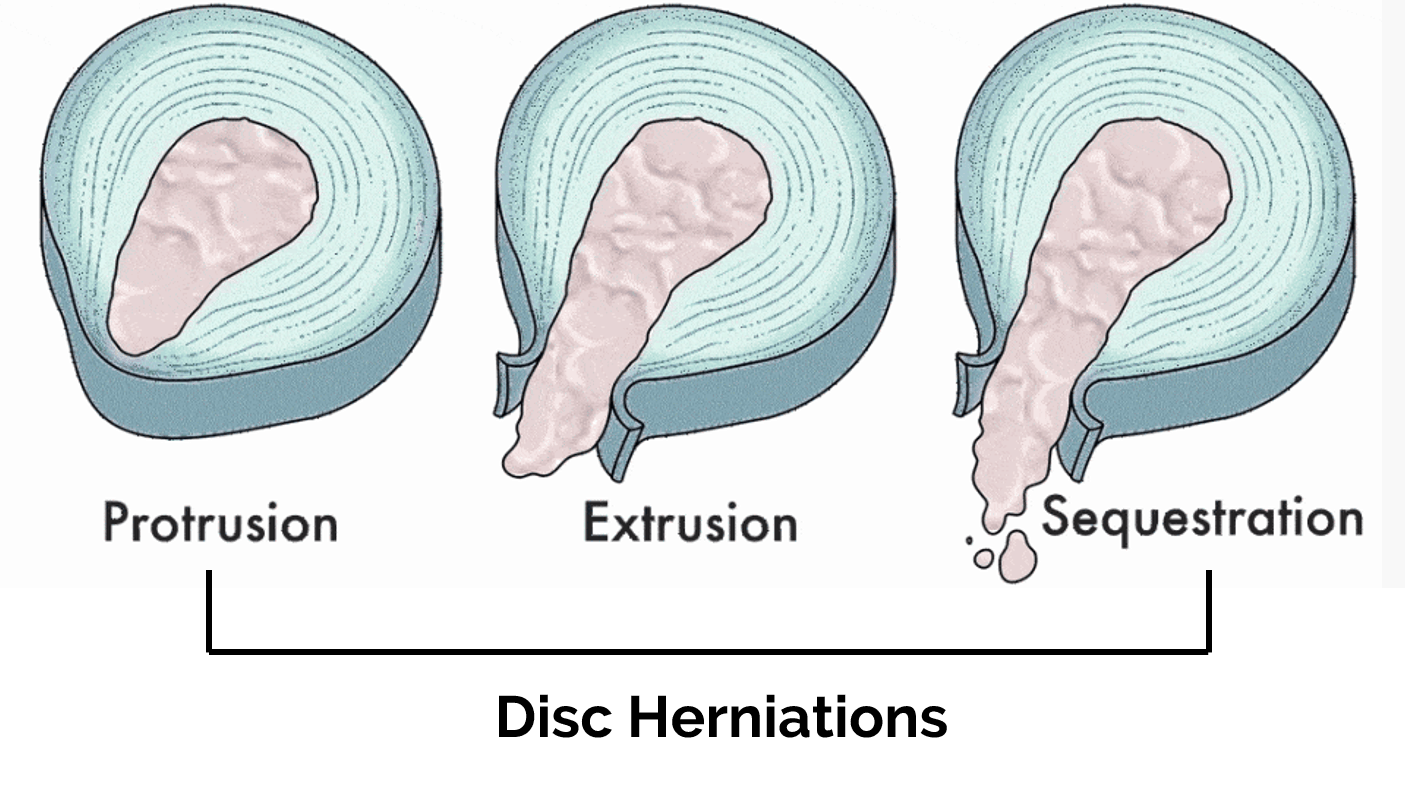
A herniated disc occurs when the nucleus pulposus pushes through the annulus fibrosis at less than 25% of the circumference of the disc. Disc herniations can then further be classified into protrusions, extrusions, migrations, or sequestrations based on HOW the material pushes through the annulus fibrosis.
What’s the Difference Between a Disc Herniation and a Disc Bulge
While a disc herniation involves 25% or less of displaced disc matter (nucleus pulposus), disc bulges involve more than 25% displaced disc matter. Yes, I know. It seems a little backwards right? You’ve probably heard that herniations are “worse” than bulges.
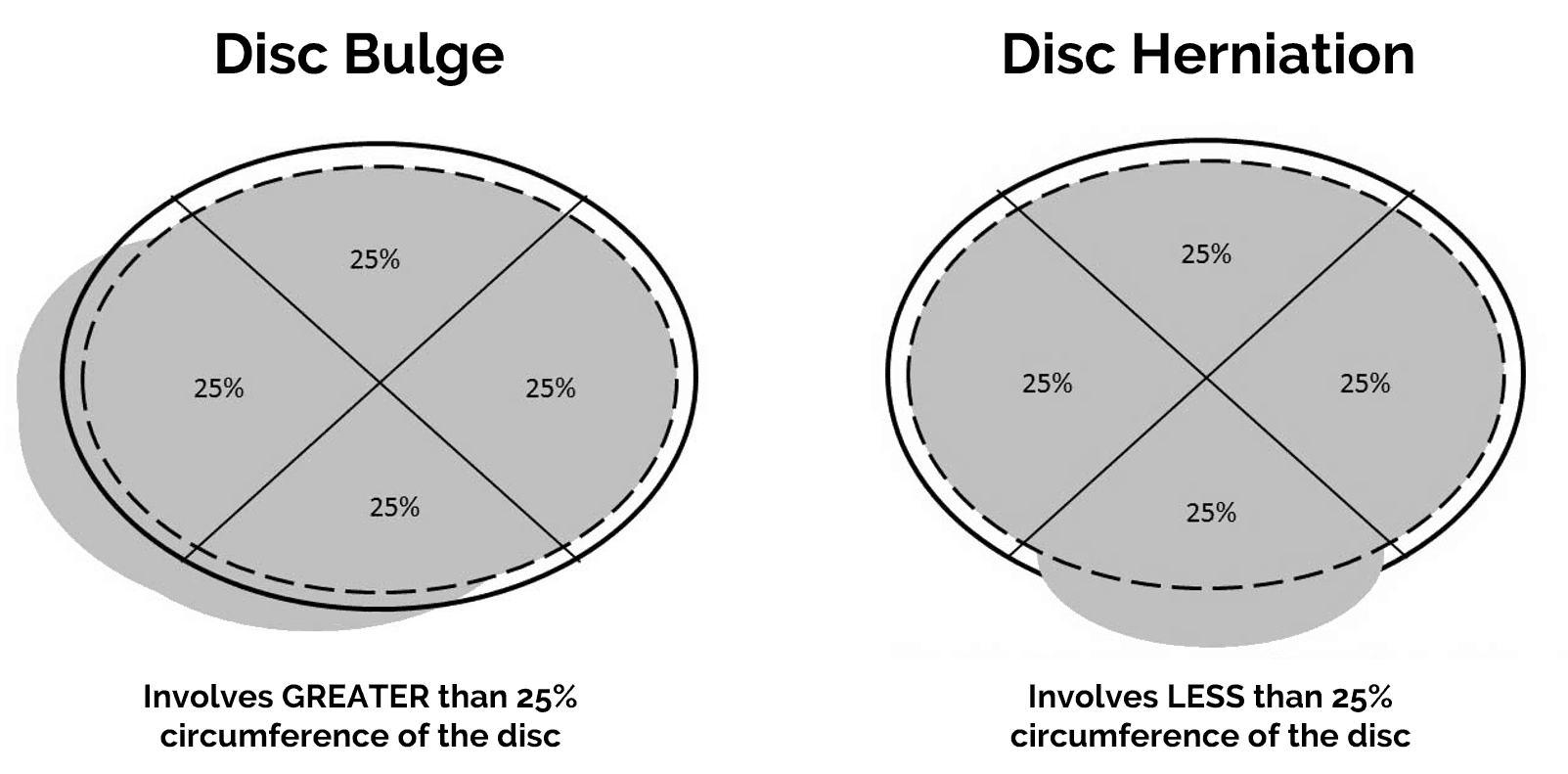
This is because although herniations involve less than 25% of the circumference of the disc, they are more likely to compress nerve roots as the matter is displaced further.
What About Deadlifts and Herniated Discs?
While knowing all of these anatomical terms and seeing the diagrams are cool, they actually aren’t that relevant. Why? Because it won’t give you any insight as to whether or not you can deadlift with a herniated disc!
If you have back pain and you think you need an MRI to see if you can deadlift or not…you don’t. Instead, try using tips from this article to rapidly overcome your back pain.
If you’ve already HAD an MRI and it SHOWS a herniated or bulging disc, there’s still hope that you can deadlift.
If you’re going to remember anything from this article, remember this: MRIs don’t tell you what type of treatment you should receive and they often pick up a lot of “normal” findings.
You should make your loading and programming decisions based on your symptoms and how you feel…not what your MRI says. So let’s talk more about those “normal” findings.
Herniated and Bulging Discs are More Common than You Think
Did you know that if you are 30 years old, without ANY back pain, that there’s a 30% chance that you have a low back disc herniation and don’t even know it? Even crazier, if you’re in your 40s without any back pain, there’s a 50% chance you have a disc bulge.
Yep you heard that correctly. If you’re 40 and don’t have any back pain…flip a coin. That’s the chances that you have a bulging disc!
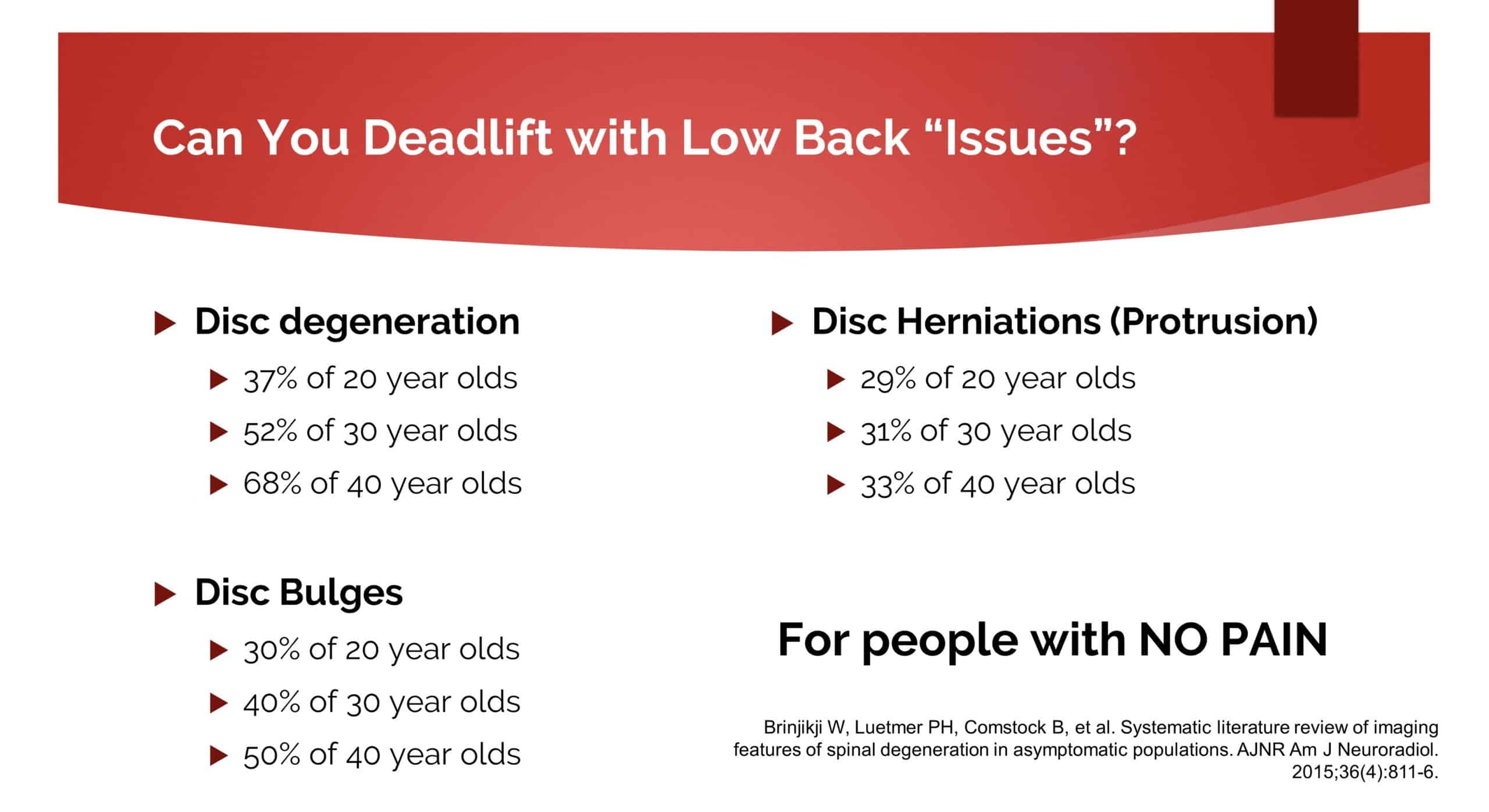
To clarify, I’m not telling you this to scare you. In fact, I’m trying to do exactly the opposite. I’m trying to EMPOWER YOU.
Herniated and Bulging Discs HAPPEN
They are a normal part of aging and can be found on people with zero back pain. Consider them “wrinkles on the inside.”
This means if you DO have back pain and you have had an MRI that shows a herniated or bulging disc, that it may not be the reason your back hurts, and it is possible to change your pain and get stronger while stay having a disc “issue.”
This is the perfect time to focus on what you CAN change. Work on improving strength, resiliency, and tissue capacity.
Herniated and Bulging Discs Can UN-HAPPEN
Just like herniated and bulging discs can be considered “wrinkles on the inside,” turns out these wrinkles may be reversible too. Yep, that’s right…give it about a year and discs can actually un-herniate.
In fact, this rate of spontaneous regression is approximately 96% for disc sequestration, 70% for disc extrusion, 41% for disc protrusion, and 13% for disc bulging. This is good news! This is another reason to trust the process. Rehab doesn’t magically happen in 4 weeks!
Let’s Talk About Red Flags
Before you start haphazardly doing deadlifts with a herniated disc, let’s do our due diligence and make sure nothing more sinister is going on. Serious spinal conditions include things like cauda equina, cancer/tumor, or some other systemic disease.
Symptoms that may indicate something like this is going on are called red flags. These may include, but not limited to:
- Recent history of traumatic injury
- Pain/numbness on the inside of the thighs or genital region (saddle paresthesia)
- Fever or recent unintentional weight loss with your back pain
- Loss of control of bowel/bladder
- Numbness or unrelenting shooting pain down BOTH legs.
- Loss of movement in the legs
So, if you’re experiencing any of the above red flag signs/symptoms, you should NOT be deadlifting, and you should seek emergency medical attention. The good news is, if you’re not experiencing any red flag symptoms, the odds that you can deadlift with a herniated disc are pretty good!
Pain or Numbness Down One Leg
While we just mentioned that unrelenting severe pain and numbness down both legs would be a contraindication to deadlifts and a reason to seek medical care, what about pain or numbness down one leg? This is a very common issue and routinely referred to as “sciatica.”
This may often present like a feeling of random one-sided hamstrings tightness, specifically with forward bending. It may be the result of a herniated disc pushing on a nerve root.
If this is the case, this is NOT something you want to try and stretch or deadlift through. It’s something you want to work AROUND.
Train variations of the hip hinge that you can tolerate that do not reproduce your leg pain. This may involve training with a shorter range of motion via options like rack pulls or block pulls.
In addition, feel free to continue training your squat and lunge patterns to tolerance as well, provided that they aren’t reproducing your leg pain or tightness. For a guide to training with pain, check out this article.
While you’re training AROUND the leg pain, you can also try some specific exercises to help reduce it too. Prone press ups and sciatic nerve flossing drills work great here.
Prone Press Up
If you’re dealing with pain down the back of one leg, it may be coming from your low back. To relieve this, try lying down on your stomach and performing a push up while keeping your hips down. Do this for 10 reps and see how it feels on your leg. If it doesn’t hurt your leg at all, this may be a good exercise for you.
Try 2-3 sets of 10 reps throughout the day to help abolish your leg pain.
The idea here is if we bombard your body with a movement that feels really good, the other painful movements (forward bending) will start to calm down a bit.
If you’re having trouble with the full press up, you can start with the modified prone press up onto your elbows first. Then, you can progress to the full prone press up with elbows locked.
Sciatic Nerve Flossing
Sciatic nerve flossing is another technique you can try that may help reduce your leg pain. The idea here is this: instead of cranking on your sciatic nerve and aggressively pushing through a hamstrings stretch, you’re going to move your head and leg together in a specific way to try and get that nerve moving a little better.
The positions look like this:
- Kick your leg up and look up (knee extension and cervical extension)
- Kick your leg down and look down (knee flexion and cervical flexion)
Make sure these are as tolerable as possible (ideally pain-free). Remember the goal here is HEALTHY motion, not to see how angry you can make your leg!
You can also try a variation of this lying on your back if it’s more tolerable. With the supine variation, pull your knee towards your chest, hold it there, extend your leg, and then pump your ankle up and down until a very light stretch is felt in the back of your leg. Watch the video above to see what I mean.
Both of these can be performed for 10 reps, multiple times throughout the day.
If the press ups and flossing aren’t helping or you’re experiencing worsening symptoms, it would be best at this point to seek care from a physiotherapist.
Sciatica and Deadlifts…The Big Picture
If you’re dealing with sciatica during the deadlift, here’s what to do:
Choose a deadlift variation that doesn’t reproduce this pain. This is NOT something you want to work through. If you can’t find a hip hinge variation that doesn’t reproduce your leg pain, you may need to remove all hip hinging exercises temporarily to get your leg to calm down.
In the meantime, you can continue to squat and lunge to your tolerance, provided it doesn’t cause leg pain.
No Leg Pain…Just a Disc “Issue” on MRI
If you have back pain without leg pain, you’re not showing any red flag symptoms, and you had an MRI that shows a disc bulge or herniation, you’re in luck. This is the prime situation where you can use deadlifts to help cure your herniated disc. Unfortunately, there are still a lot of medical and rehab providers out there who like to scare people into thinking it will make it worse.
Deadlifts aren’t bad for your back. Improperly executed and poorly programmed deadlifts are!
If you find yourself with just a backache, the goal in this situation is to find the optimal hip hinge variation and dose that will feel good to YOU and stimulate a strength and hypertrophy response.
In order to do this, you need to find you “entry point” exercise, or exercise that is most similar to the deadlift variation of choice that you can tolerate. Here are some options for you.
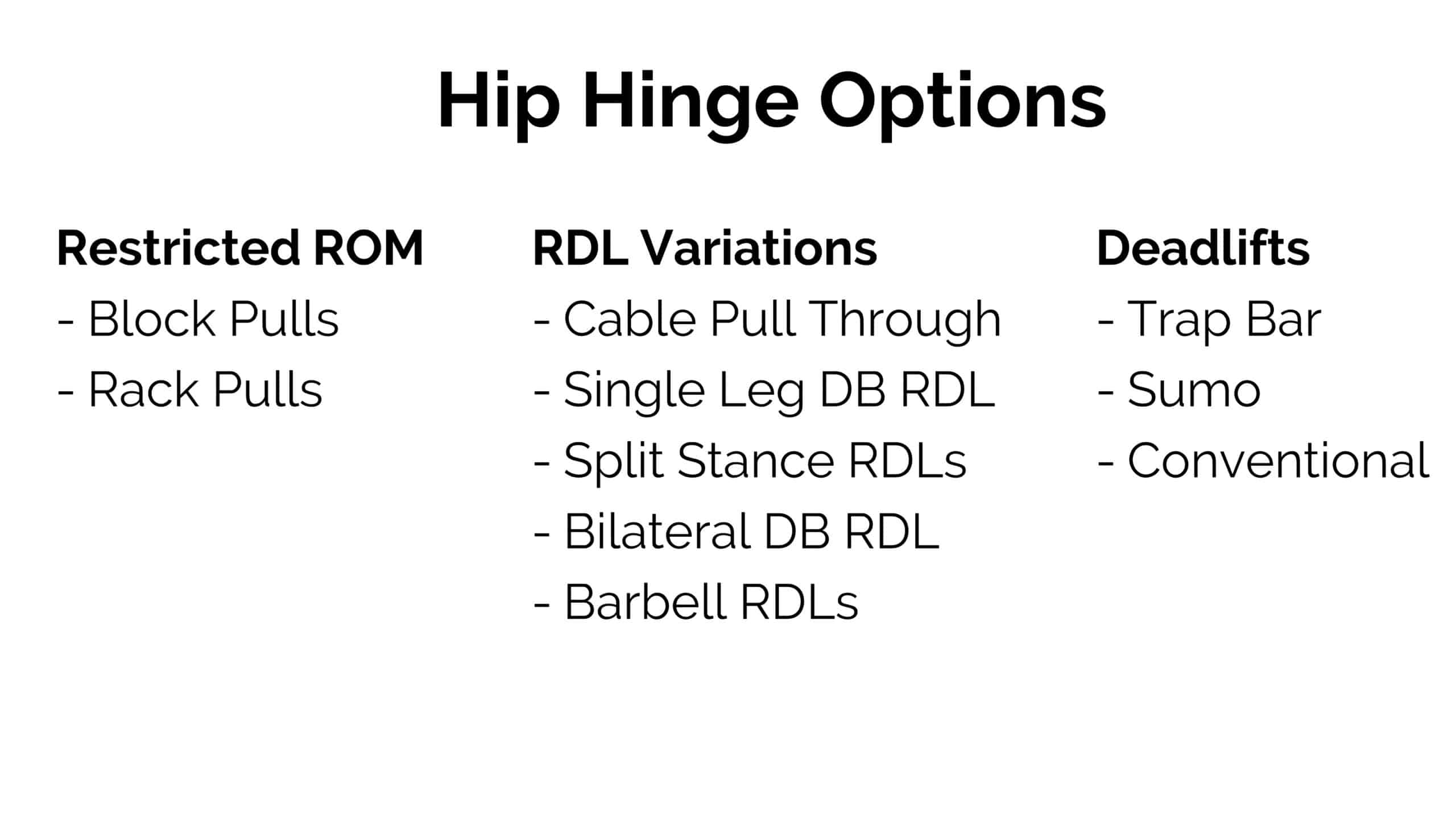
If you can deadlift tolerably right now…then congrats! The deadlift is your entry point exercise. On the other hand, if you can’t tolerably deadlift from the floor or you’re overly hesitant to, you can start with RDLs.
Start with Dumbbell RDLs
If you’re dealing with back pain but no leg pain, dumbbell RDLs are a good hip hinge variation to start with. By using dumbbells, you can keep the load closer to you than a barbell and you only have to go down as far that feels comfortable for you. Make sure you drag those dumbbells right down the sides of your legs when you do these.
You can perform this for 3-4 sets of 8-12 and really work on grooving that hip hinge pattern. These are great for both hamstrings and spinal extension strength, hypertrophy, and endurance
Progress to Your Deadlift of Choice
If you’ve mastered the DB RDL and your back is tolerating it well, the next goal would be to implement a deadlift variation that you can tolerate. Sometimes with deadlifts and herniated discs you’ll need to restrict the range of motion.
Block pulls and rack pulls (like mentioned earlier in this article) would be a good option. Otherwise, you can choose from the trap bar, conventional deadlift, or sumo deadlift. If you need help with the conventional deadlift, check out our tutorial below.
In general, sumo deadlifts and trap bar deadlifts are going to be less stress on the spine because of the ability to get your center of gravity closer to the weight, so you may want to start here.
That being said, just because conventional deadlifts are more “stress” on the spinal, doesn’t mean that’s necessarily bad. Stress is stress, and if you’re TRYING to stress your spine more to force an adaptation, conventional might be the way to go. I recommend trying all 3 variations and seeing what feels best to you!
Tying it All Together
Hopefully now you have a better idea of if you can deadlift with a herniated disc. If not, I made a flowchart for you that should help clarify things:
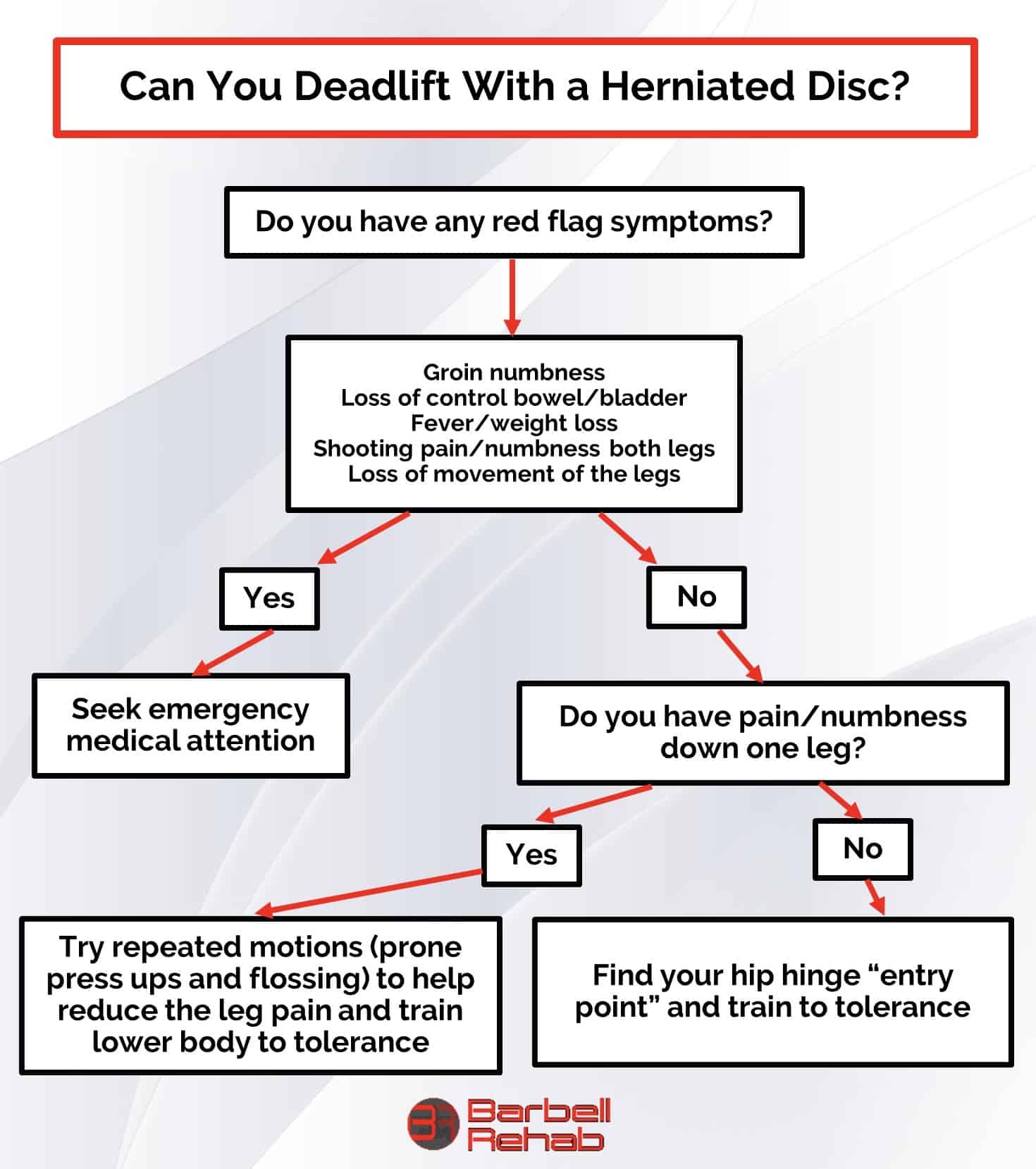
- Screen for red flags. If you have red flag symptoms seek emergency medical care. Do not deadlift
- If you have pain/numbness down one leg, pick a deadlift variation that does not exacerbate it and work on prone press ups and/or flossing to help reduce it. If you get stuck, seek out a local physiotherapist.
- If you don’t have any red flags or leg pain/numbness but know that you have a disc bulge or herniation, fear not. Find your hip hinge “entry point” and progressively load it tolerance to build strength and reduce pain!
Use these tips above to help you decide if you can deadlift with a herniated disc. (Hint: the answer is probably yes!)

